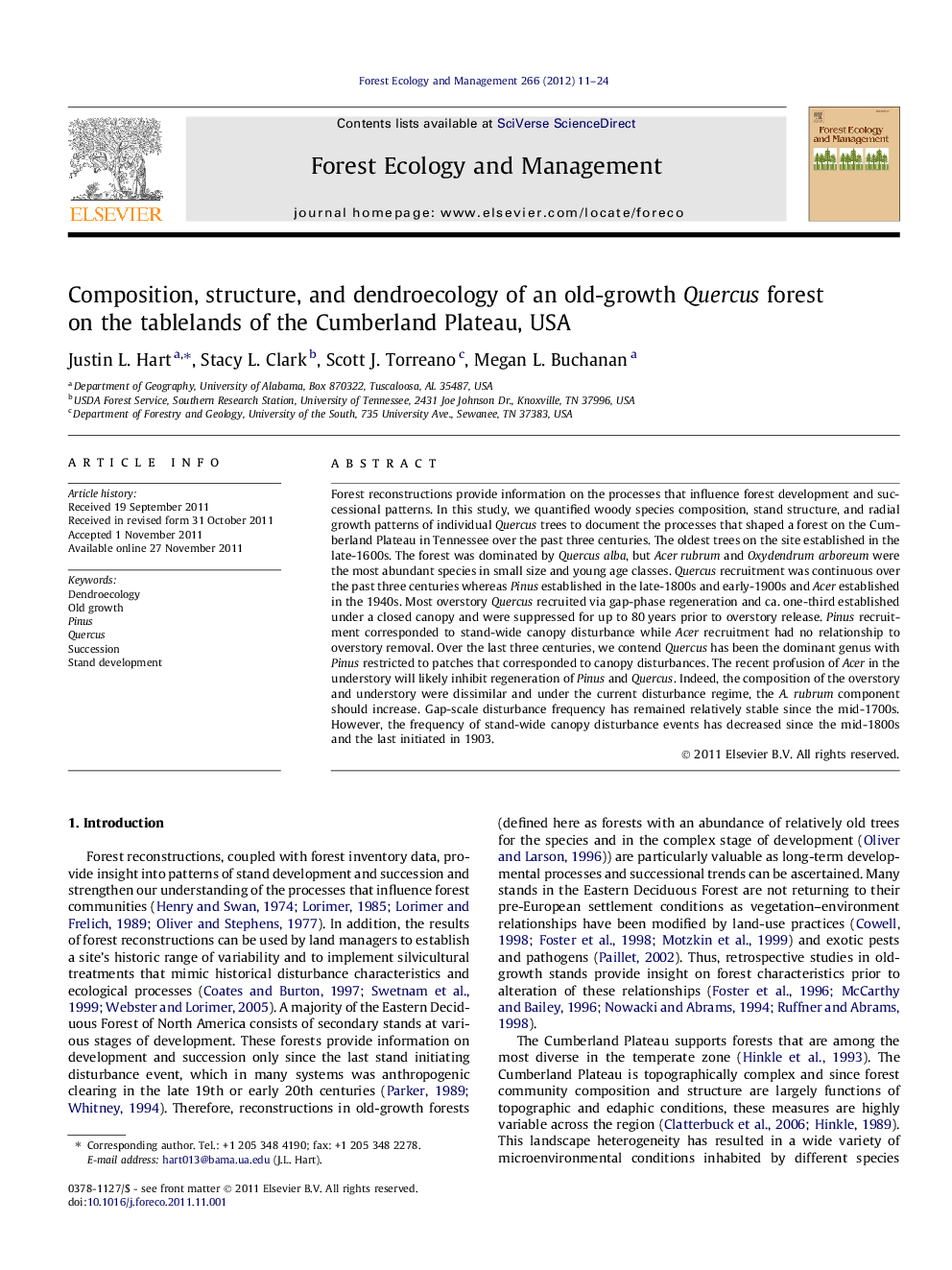| کد مقاله | کد نشریه | سال انتشار | مقاله انگلیسی | نسخه تمام متن |
|---|---|---|---|---|
| 87696 | 159263 | 2012 | 14 صفحه PDF | دانلود رایگان |

Forest reconstructions provide information on the processes that influence forest development and successional patterns. In this study, we quantified woody species composition, stand structure, and radial growth patterns of individual Quercus trees to document the processes that shaped a forest on the Cumberland Plateau in Tennessee over the past three centuries. The oldest trees on the site established in the late-1600s. The forest was dominated by Quercus alba, but Acer rubrum and Oxydendrum arboreum were the most abundant species in small size and young age classes. Quercus recruitment was continuous over the past three centuries whereas Pinus established in the late-1800s and early-1900s and Acer established in the 1940s. Most overstory Quercus recruited via gap-phase regeneration and ca. one-third established under a closed canopy and were suppressed for up to 80 years prior to overstory release. Pinus recruitment corresponded to stand-wide canopy disturbance while Acer recruitment had no relationship to overstory removal. Over the last three centuries, we contend Quercus has been the dominant genus with Pinus restricted to patches that corresponded to canopy disturbances. The recent profusion of Acer in the understory will likely inhibit regeneration of Pinus and Quercus. Indeed, the composition of the overstory and understory were dissimilar and under the current disturbance regime, the A. rubrum component should increase. Gap-scale disturbance frequency has remained relatively stable since the mid-1700s. However, the frequency of stand-wide canopy disturbance events has decreased since the mid-1800s and the last initiated in 1903.
► We quantified vegetation patterns and radial growth trends for an old-growth Quercus forest.
► Size and age structure indicated composition of the forest will shift to include a stronger Acer rubrum component.
► Gap-scale disturbance frequency has remained relatively stable since the mid-1700s.
► The frequency of stand-wide disturbances decreased since the mid-1800s.
► Under the current disturbance regime active management is required to retain the Quercus and Pinus components.
Journal: Forest Ecology and Management - Volume 266, 15 February 2012, Pages 11–24